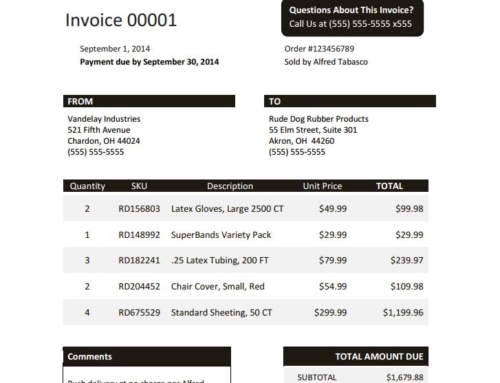When you have recognized a problem with your accounts receivable performance and put forth an effort to correct it by hiring additional employees, making adjustments to your processes and developing an invoice collection strategy, it can be pretty disappointing when you don’t see the results you thought your efforts would bring. Don’t be too let down, just by putting forth that effort you are already on the right path! However, one of these common mistakes may be what is holding back your newly implemented collection strategy.
YOUR POLICY AND PROCEDURES ARE NOT IN WRITING
How are you communicating your invoice collection strategies to employees in accounting and sales? According to the Credit Research Foundation, only 20% of credit departments have a formalized credit policy, a written document outlining the rules and processes of extending credit and collecting invoices. By putting this information in writing, any employee or new hire can access it to make sure they are following procedures and best practices designed for your organization to improve the process and results.
YOU DON’T HAVE ESTABLISHED GOALS
You say you’re not seeing the results you had hoped for from your invoice collection strategies, but what are you working toward? Many companies set out on a mission to improve accounts receivable without a destination. Some ideas might be to lower DSO by X% or reduce bad-debt by X% from there you just need to make sure you have the tools in place, such as a receivables dashboard, to measure your progress toward those goals and identify what you areas you need to improve to reach them. Remember your business classes? Always make your goals S.M.A.R.T
YOU DON’T HAVE THE STAFF TO SUPPORT YOUR INVOICE COLLECTION STRATEGIES
According to Credit Today, 25% of credit departments feel as though they do not have adequate staff to manage their workload. Considering that A/R is typically among an organization’s largest assets and pays the bills, it is important to make sure you have enough people focused on the tasks involved. While there is no scientific way to calculate how many people your company should have managing invoice collection, there are a handful of factors and rules of thumb to consider that can help you come up with an answer including company size, invoice complexity, invoice volume, etc.
YOU’RE NOT TRAINING YOUR EMPLOYEES
Most companies, especially those categorized as an SMB do not have a dedicated accounts receivable manager trained in the best ways to communicate with customers and manage the process. Instead, they put this responsibility on the shoulders of an untrained office manager or part-time clerk. The team member responsible for managing invoices might know how to process an invoice, but they may not be trained in other critical areas. That’s ok, there are plenty of tools and training classes available to turn them into an efficient and effective invoice collection pro. You can ask more senior employees, such as your controller or CFO to teach these employees, or you can take advantage of external resources such as those available through The National Association of Credit Management (NACM) or The Credit Research Foundation.
YOU’RE MAKING THINGS HARDER THAN THEY NEED TO BE
More often than not, companies have a hard time collecting invoices as quickly as they might like to because they’re complicating things by using the wrong tools for the job. According to our recent study, 47.9% of SMB companies are using their enterprise resource planning (ERP) business systems to manage credit and collections while a majority of the remaining respondents use manual processes involving aging reports and spreadsheets.




